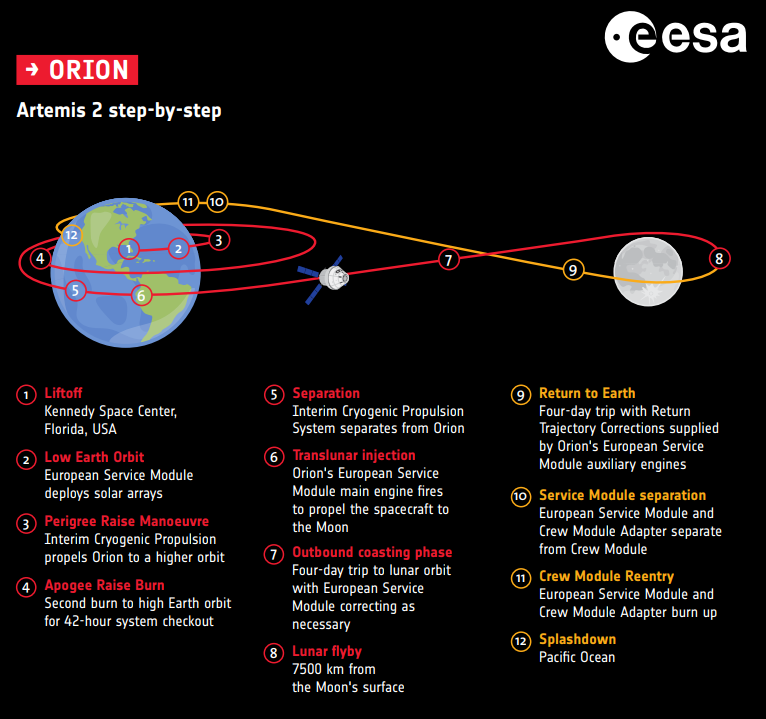Artemis II trajectory
Similar missions
In 1968, the Apollo 8 mission, crewed by astronauts Frank Borman, Jim Lovell, and William Anders, was designed to test-fly command and service module beyond low Earth orbit. Although similar to Artemis 2 in that it was crewed and did not land on the Moon, it differed by completing 10 orbits of the Moon. Apollo 13 (1970) was the only Apollo mission that flew past the Moon by a free-return trajectory.
In 2005, the company Space Adventures announced plans to take two tourists within 100 km (62 mi) of the lunar surface using a Soyuz spacecraft piloted by a professional cosmonaut. The mission, named DSE-Alpha, has been priced at US$150 million per seat and is expected to last 8–9 days when scheduled. Company CEO Eric Anderson stated in 2011 that one seat had been sold, but the launch date has continually slipped since the second seat remains unsold as of 2017.
A SpaceX lunar tourism mission was initially proposed for late 2018 and would have been similar to Artemis 2 in crew size, with two space tourists paying for a free-return loop around the Moon and back to Earth, using the Crew Dragon capsule and launched on the Falcon Heavy. After the first flight of Falcon Heavy in 2018, SpaceX announced that Falcon Heavy would not be used for crewed flights to focus their future development on Starship and indicated that the lunar mission would more likely be carried out with the Starship. On September 14, 2018, SpaceX officially announced that it had signed one of the paying passengers, Yusaku Maezawa, for the #dearMoon project mission using the Starship, scheduled for 2023, and that he would invite 6 to 8 artists to join him.
Artemis II
The spacecraft will be placed in orbit around the Earth and will then receive a one-time boost to the farthest point of the Moon’s orbit and then immediately return to Earth. No course corrections. This makes it an eccentric orbit, and as a result, it may be possible to get to the farthest point from Earth that humans have ever been. Depending on the time of launch.
Footnote
- Sources: Aerospace dashboard, funkystuff.org
- Outgoing: NASA
- Keywords: graph, graphic, map, course

